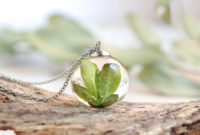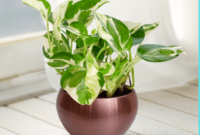Money Plant Mania: Discover The World’s Most Famous Gardens!
Money plants are known for their unique look and the charm they bring to any place they’re kept in. They have become increasingly popular in recent times, not only for their aesthetic appeal but also for the various benefits they offer. One of the most significant benefits of money plants is their ability to purify the air and improve the overall quality of the environment.

If you’re a fan of money plants, you’ll be pleased to know that there are several famous gardens around the world that have beautifully curated money plant arrangements. These gardens offer a holistic experience to visitors, where they can admire the beauty of these plants and learn more about their benefits.
One of the most famous money plant gardens in the world is the Kew Gardens in London, England. The Kew Gardens are known for their vast collection of plants and flowers, and the money plant arrangements add to the charm of this beautiful garden. The money plants at Kew Gardens are grown in various shapes and sizes, making the garden a sight to behold.
Another famous money plant garden is the Golden Gate Park in San Francisco, California. The park is spread across 1,017 acres and is home to several gardens, including the Conservatory of Flowers. The Conservatory of Flowers has a beautiful money plant garden with unique arrangements that make it a must-visit for anyone who loves these plants.
The Singapore Botanic Gardens is yet another famous money plant garden that you should add to your list. The garden is spread across 82 hectares and is home to over 10,000 species of plants. The money plant garden at the Singapore Botanic Gardens is known for its intricate arrangements and beautiful designs.
Moving to the east, the Nan Lian Garden in Hong Kong is a must-visit for anyone who loves money plants. The garden is known for its traditional Chinese architecture and beautiful natural landscape. The money plant arrangements in the garden are a sight to behold and add to the overall beauty of the garden.
In India, one of the most famous money plant gardens is the Lalbagh Botanical Garden in Bangalore. The garden is spread across 240 acres and is home to over 1,800 species of plants. The money plant arrangements in the garden are unique and add to the overall charm of the garden.
If you’re ever in Thailand, be sure to visit the Nong Nooch Tropical Garden in Pattaya. The garden is spread across 600 acres and has several themed gardens, including a money plant garden. The money plant arrangements in the garden are known for their intricate designs and unique shapes.
In conclusion, money plant gardens are an excellent way to admire the beauty of these unique plants and learn more about their various benefits. From the Kew Gardens in London to the Nong Nooch Tropical Garden in Pattaya, there are several famous money plant gardens around the world that you can visit and enjoy. If you’re a fan of money plants, be sure to add these gardens to your list of must-visit places.
Get Inspired By The Beautiful money plant Gardens Of The World!
Money plants, also known as Devil’s ivy or Epipremnum aureum, are popular houseplants that are known to bring good luck, prosperity, and positive energy into homes. Not only are they easy to care for, but they also have a unique ability to clean the air and remove toxins.
But have you ever wondered where these plants originated from and what their significance is in different cultures? Well, look no further because in this article we will take you on a journey through the world’s most beautiful money plant gardens!
First stop, we have the famous Kew Gardens in London, England. This stunning botanical garden is home to over 50,000 plants, including a wide variety of money plants. Visitors can stroll through the Palm House, Temperate House, and Princess of Wales Conservatory to see these plants in all their glory. The Temperate House even has a section dedicated solely to money plants, where visitors can learn about their history and significance.
Next up, we have the stunning Jardim Botânico in Rio de Janeiro, Brazil. This botanical garden is over 200 years old and is one of the most important cultural landmarks in Brazil. The garden is home to a wide variety of plant species, including a beautiful collection of money plants. Visitors can wander through the gardens and admire the lush greenery, or stop by the butterfly house to see these plants up close.
Moving on, we have the beautiful Singapore Botanic Gardens in Singapore. This UNESCO World Heritage Site is one of the most visited attractions in Singapore and is home to a stunning collection of money plants. Visitors can stroll through the National Orchid Garden, or stop by the stunning Symphony Lake to see these plants in all their glory.
Another must-see money plant garden is the stunning Butchart Gardens in Victoria, Canada. This beautiful garden is over 100 years old and is home to a wide variety of plant species, including a stunning collection of money plants. Visitors can stroll through the sunken garden, or stop by the Japanese garden to see these plants up close.
Last but not least, we have the beautiful Keukenhof Gardens in Lisse, Netherlands. This stunning garden is only open for a few months each year, but it is well worth the trip. The garden is home to a wide variety of plant species, including a stunning collection of money plants. Visitors can stroll through the tulip fields, or stop by the pavilion to see these plants up close.
In conclusion, money plants have been a significant plant species for centuries and continue to be a popular plant choice for many today. These stunning gardens not only showcase the beauty of these plants but also provide a unique insight into their cultural significance. So, why not take a trip and get inspired by the beautiful money plant gardens of the world!



